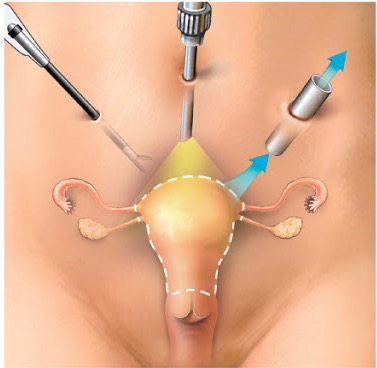In minimally invasive surgery, doctors use a variety of techniques to operate with less damage to the body than with open surgery. In general, minimally invasive surgery is associated with less pain, a shorter hospital stay and fewer complications.
Laparoscopy — surgery done through one or more small incisions, using small tubes and tiny cameras and surgical instruments — was one of the first types of minimally invasivesurgery.

Another type of minimally invasive surgery is robotic surgery. It provides a magnified, 3-D view of the surgical site and helps the surgeon operate with precision, flexibility and control.

Continual innovations in minimally invasive surgery make it beneficial for people with a wide range of conditions. If you need surgery and think you may be a candidate for thisapproach, talk with your doctor.
Gynecologists trained in minimally invasive gynecologic surgery specialize in evaluatingand treating women for:
- endometrial polyps;
- submucose fibroids;
- Ashermann syndrome (intrauterine adjesions, synechia);
- endometrial hyperplasia;
- benign cysts of the ovary - folicular, luteal, dermoid, mucinous;
- paraovarian cysts;
- endometriosis;
- Laparoscopically Assisted Vaginal Hysterectomy (LAVH);
- Total Laparoscopic Hysterectomy (TLH);
- infertility;
- extrauterine pregnancy;
- Salpingectomy (removal of the Fallopian tubes, usually before starting an IVF procedure);
- endometrial cancer, cervical cancer.
Innovative treatment options
Your doctor will talk with you about a range of innovative treatment options and develop an individualized treatment plan that may involve one of these minimally invasive gynecologic approaches:
- HYSTEROSCOPY - This technique does not require any incisions and has minimalrecovery time;
- LAPAROSCOPY - This technique has been shown to be an effective treatment that results in shorter hospital stays, less discomfort and a shorter recovery period;
- ROBOTIC SURGERY - This approach has the same advantages as advanced laparoscopy, and it allows surgeons to operate with increased precision and accuracy while minimizing trauma to surrounding tissues;
- VAGINAL SURGERY - This is the most minimally invasive approach to major gynecologic surgery. It has all of the recovery advantages associated with laparoscopic.
